Related Research Articles
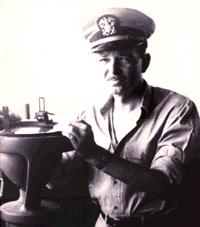
Harry Hammond Hess was an American geologist and a United States Navy officer in World War II who is considered one of the "founding fathers" of the unifying theory of plate tectonics. He is best known for his theories on sea floor spreading, specifically work on relationships between island arcs, seafloor gravity anomalies, and serpentinized peridotite, suggesting that the convection of the Earth's mantle was the driving force behind this process.

Paul Joseph Weitz was an American naval officer and aviator, aeronautical engineer, test pilot, and NASA astronaut, who flew into space twice. He was a member of the three-man crew who flew on Skylab 2, the first crewed Skylab mission. He was also Commander of the STS-6 mission, the maiden flight of the Space Shuttle Challenger.

Colonel Gerald Paul Carr was an American mechanical and aeronautical engineer, United States Marine Corps officer, naval aviator, and NASA astronaut. He was Commander of Skylab 4, the third and final crewed visit to the Skylab Orbital Workshop, from November 16, 1973, to February 8, 1974.

George David Low was an American aerospace executive and a NASA astronaut. He was born in 1956 to Dr. George Low, the Manager of the Apollo Spacecraft Program Office. With undergraduate degrees in physics and mechanical engineering and a master's degree in aeronautics and astronautics, he worked in the JPL at the California Institute of Technology in the early 80's, before being picked as an astronaut candidate by NASA in 1984. In addition to holding some technical assignments, he logged more than 700 hours in space, before he left NASA in 1996 to pursue a career in the private sector.
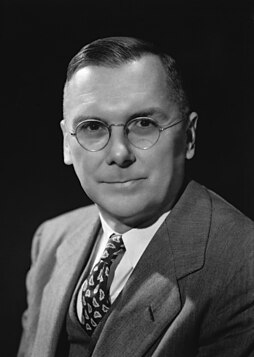
Hugh Latimer Dryden was an American aeronautical scientist and civil servant. He served as NASA Deputy Administrator from August 19, 1958, until his death.

George Robert Carruthers was an African American inventor, physicist, engineer and space scientist. Carruthers perfected a compact and very powerful ultraviolet camera/spectrograph for NASA to use when it launched Apollo 16 in 1972. He designed it so astronauts could use it on the lunar surface, making all adjustments inside their bulky space suits. Upon instructions from Carruthers, they used the camera to record the Earth's outermost atmosphere, noting its variations, and also mapped portions of the far-ultraviolet sky recording stars and galaxies, and the gaseous media between them. In 1970, sending his instruments aboard Aerobee sounding rockets, he had demonstrated that molecular hydrogen exists in the interstellar medium. Among numerous citations and awards, in 2003, Carruthers was inducted into the National Inventor's Hall of Fame. He received an honorary doctorate for Engineering from Michigan Technological University, and in 2013 the 2012 National Medal for Technology and Invention from President Barack Obama.
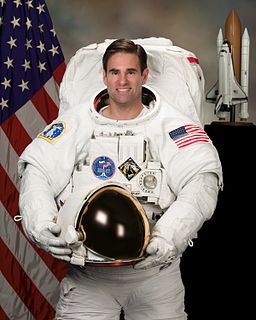
Gregory Errol Chamitoff is an engineer and former NASA astronaut. He has been to space twice, spending 6 months aboard the ISS across Expedition 17 and 18 in 2008, and another 15 days as part of STS-134 in 2011. STS-134 was the last of Space Shuttle Endeavour which delivered the Alpha Magnetic Spectrometer and completed the US Orbital Segment.

Guy Antony Jameson, FRS, FREng is Professor of Engineering in the Department of Aeronautics & Astronautics at Stanford University. Jameson is known for his pioneering work in the field of computational fluid dynamics. He has published more than 300 scientific papers in a wide range of areas including computational fluid dynamics, aerodynamics, and control theory.

Braden R. Allenby is an American environmental scientist, environmental attorney and Professor of Civil and Environmental Engineering, and of Law, at Arizona State University.

John Luther McLucas was United States Secretary of the Air Force from 1973 to 1975, becoming Secretary of the Air Force on July 19, 1973. He had been Acting Secretary of the Air Force since May 15, 1973, and Under Secretary of the Air Force since March 1969. Before he was appointed Under Secretary, he was president and chief executive officer of MITRE Corporation, of Bedford, Massachusetts, and McLean, Virginia.
Edward W Ng, Chinese name 伍煒國 was an American Applied mathematician who had also held the positions of senior scientist, senior engineer and technical manager in the U.S. Space Program. He is noted for his broad variety of mathematical applications in space science and engineering. He has also contributed conscientiously in the spin-off of technology from the space program, with applications in such diverse subjects as Bose–Einstein distribution in mathematical physics, symbolic and algebraic computation, computational physics and biomedical research.
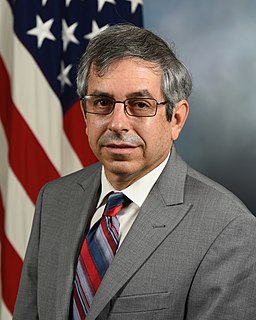
Dr. Mark J. Lewis is, as of July 2020, the acting US Deputy Under Secretary of Defense for Research and Engineering, and the Director of Defense Research and Engineering for Modernization. He was the Chief Scientist of the U.S. Air Force, Washington, D.C. from 2004 to 2008 and was the longest-serving Chief Scientist in Air Force history. He served as chief scientific adviser to the Chief of Staff and Secretary of the Air Force, and provided assessments on a wide range of scientific and technical issues affecting the Air Force mission. In this role he identified and analyzed technical issues and brought them to attention of Air Force leaders, and interacted with other Air Staff principals, operational commanders, combatant commands, acquisition, and science & technology communities to address cross-organizational technical issues and solutions. His primary areas of focus included energy, sustainment, long-range strike technologies, advanced propulsion systems, and workforce development.
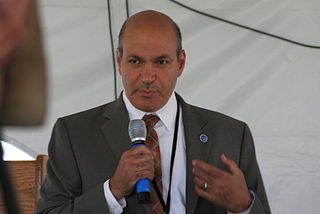
Waleed Abdalati held the position of NASA Chief Scientist from 3 January 2011 through December 2012. Abdalati was named to this position on 13 December 2010 by NASA Administrator Charles Bolden. Abdalati previously served NASA as Head of Cryospheric Sciences at Goddard Space Flight Center between January 2004 and June 2008.
Chandrathil Gouri Krishnadas Nair is an Indian technocrat, teacher and metallurgical scientist known for his contributions in the field of aeronautical metallurgy. Dr Nair was given the Padma Shri Award by the Government of India for his contributions to science and technology in 2001.

Elaine Surick Oran is an American physical scientist and is considered a world authority on numerical methods for large-scale simulation of physical systems. She has pioneered computational technology for the solution of complex reactive flow problems, unifying concepts from science, mathematics, engineering and computer science in a new methodology. An incredibly diverse range of phenomena can be modeled and better understood using her techniques for numerical simulation of fluid flows, ranging from the tightly-grouped movements of fish in Earth's oceans to the explosions of far-flung supernovae in space. Her work has contributed significantly to the advancement of the engineering profession.

Prem Shanker Goel is an Indian space scientist, former secretary at the Department of Ocean Development, Ministry of Earth Sciences, Government of India and a former director of Indian Space Research Organization. He was honored by the Government of India, in 2001, with the fourth highest Indian civilian award of Padma Shri.
Suryanarayana Srinivasan (1941–1999) was an Indian aeronautical engineer and the Director of the Vikram Sarabhai Space Centre (VSSC), known for his pioneering work in rocket science. He also served as the director of Satish Dhawan Space Centre and assisted A. P. J. Abdul Kalam in the SLV3 Mission as its deputy director. He was an elected Fellow of the Aeronautical Society of India and the Indian National Academy of Engineering. The Government of India awarded him the third highest civilian honour of the Padma Bhushan, in 2000, for his contributions to Indian space program.

Graeme Leslie Stephens is director of the center for climate sciences at the NASA Jet Propulsion Laboratory at the California Institute of Technology and professor of earth observation the University of Reading.
Kuo-Nan Liou is a Taiwanese American meteorologist.

Steve Jurczyk is an American engineer who is currently serving as the Acting Administrator of NASA. He previously worked at Langley Research Center in Hampton, Virginia.
References
- ↑ "Schubert - AGU Honors Program".
- ↑ "Gerald Schubert". Nasonline.org. Retrieved May 12, 2015.